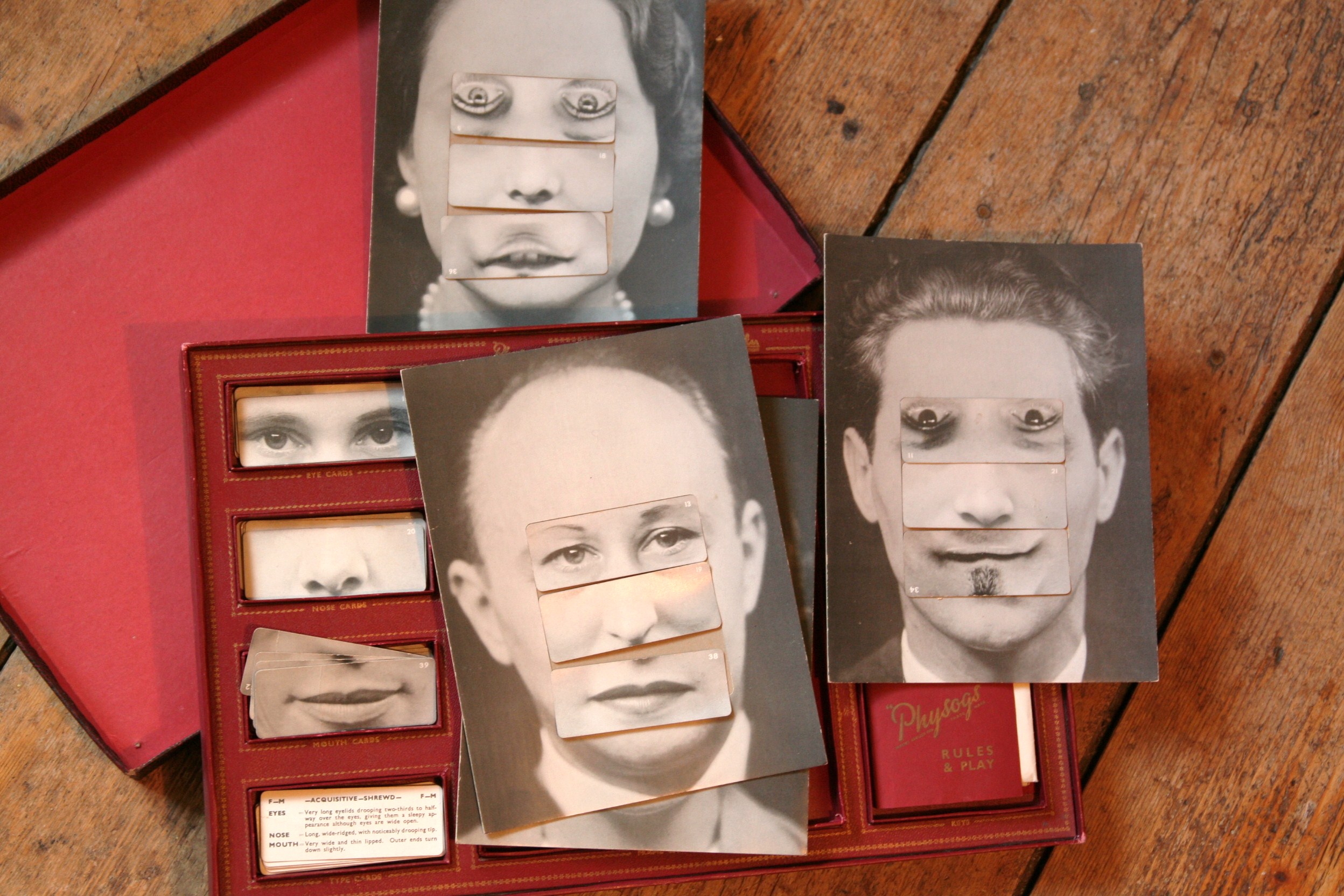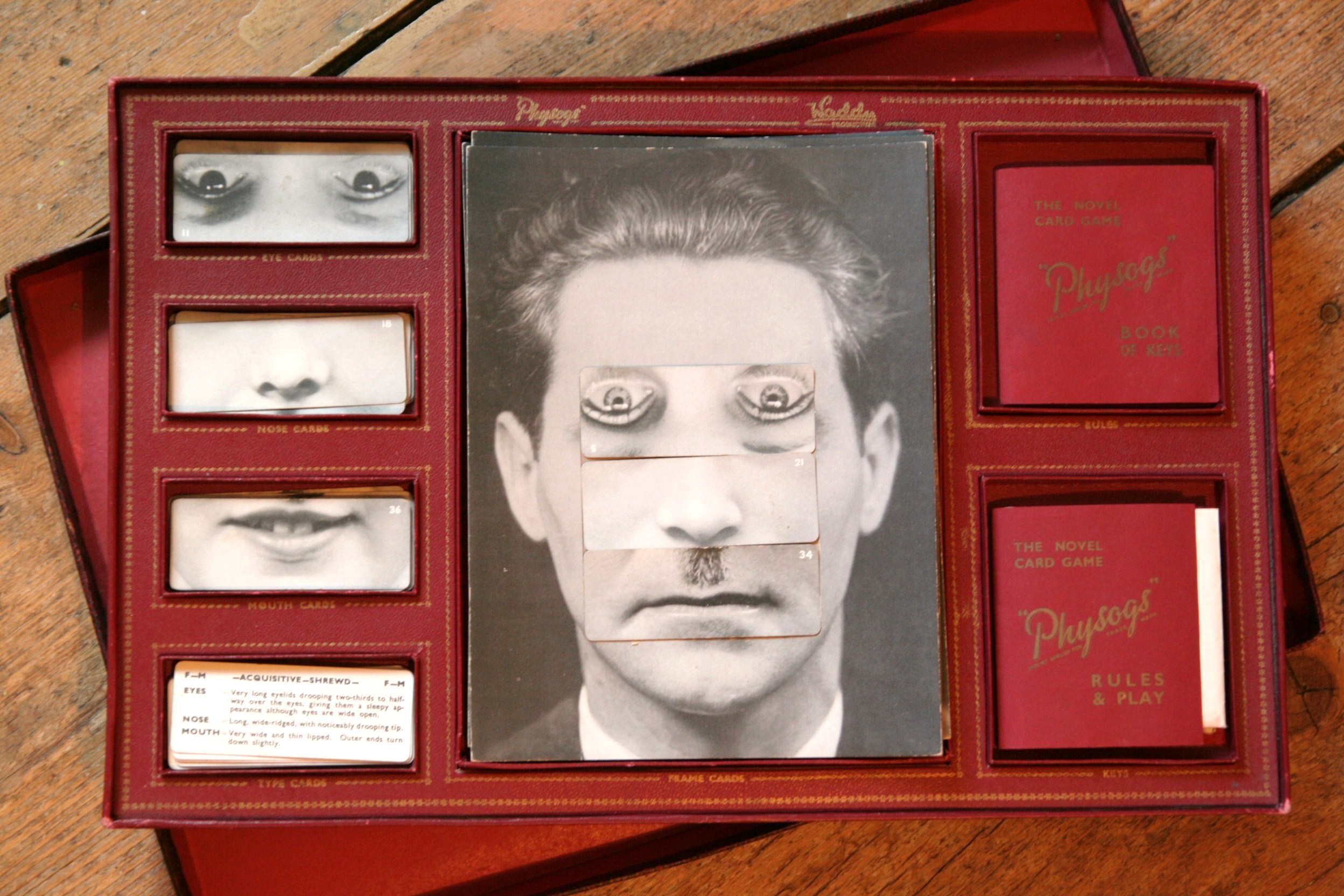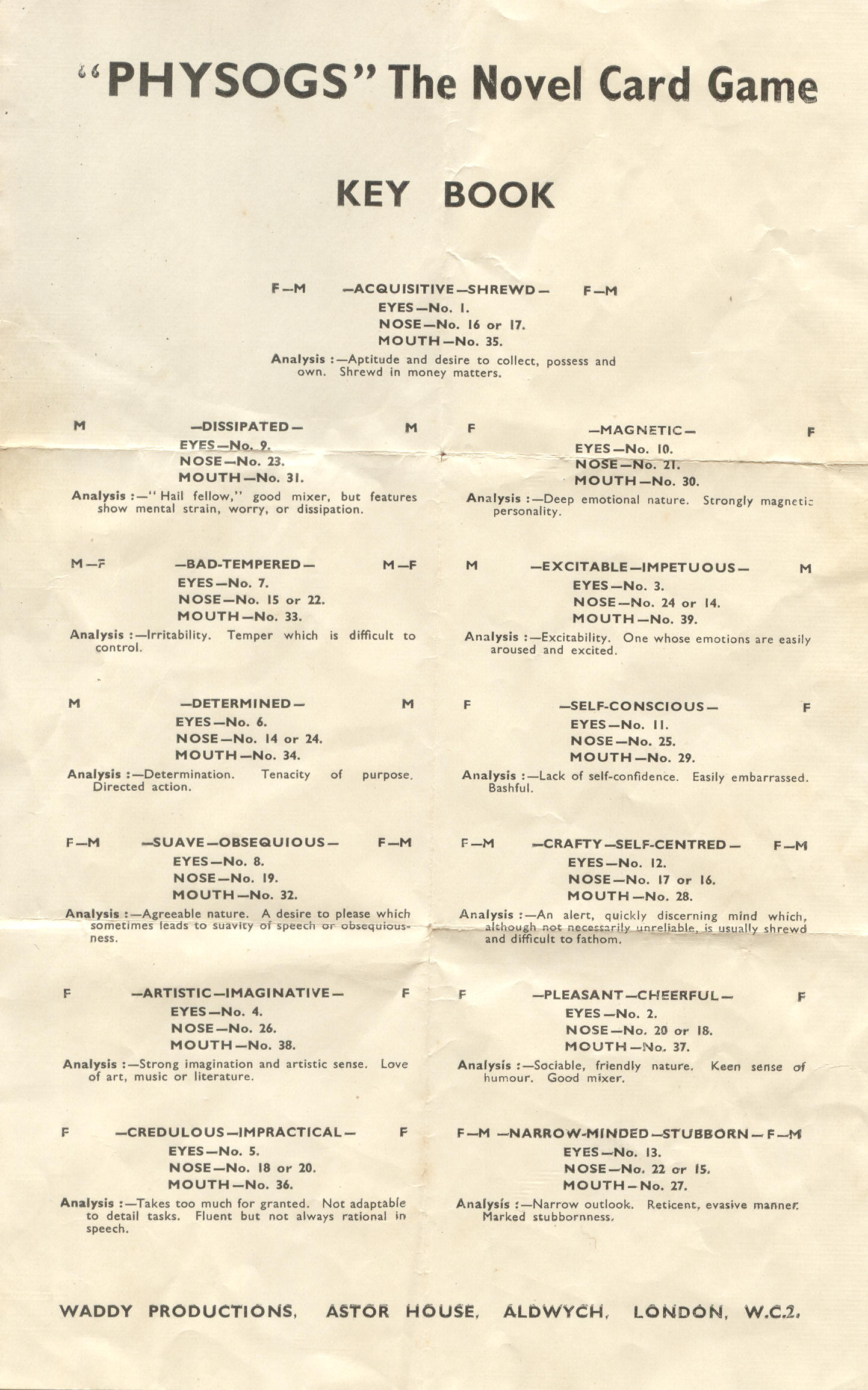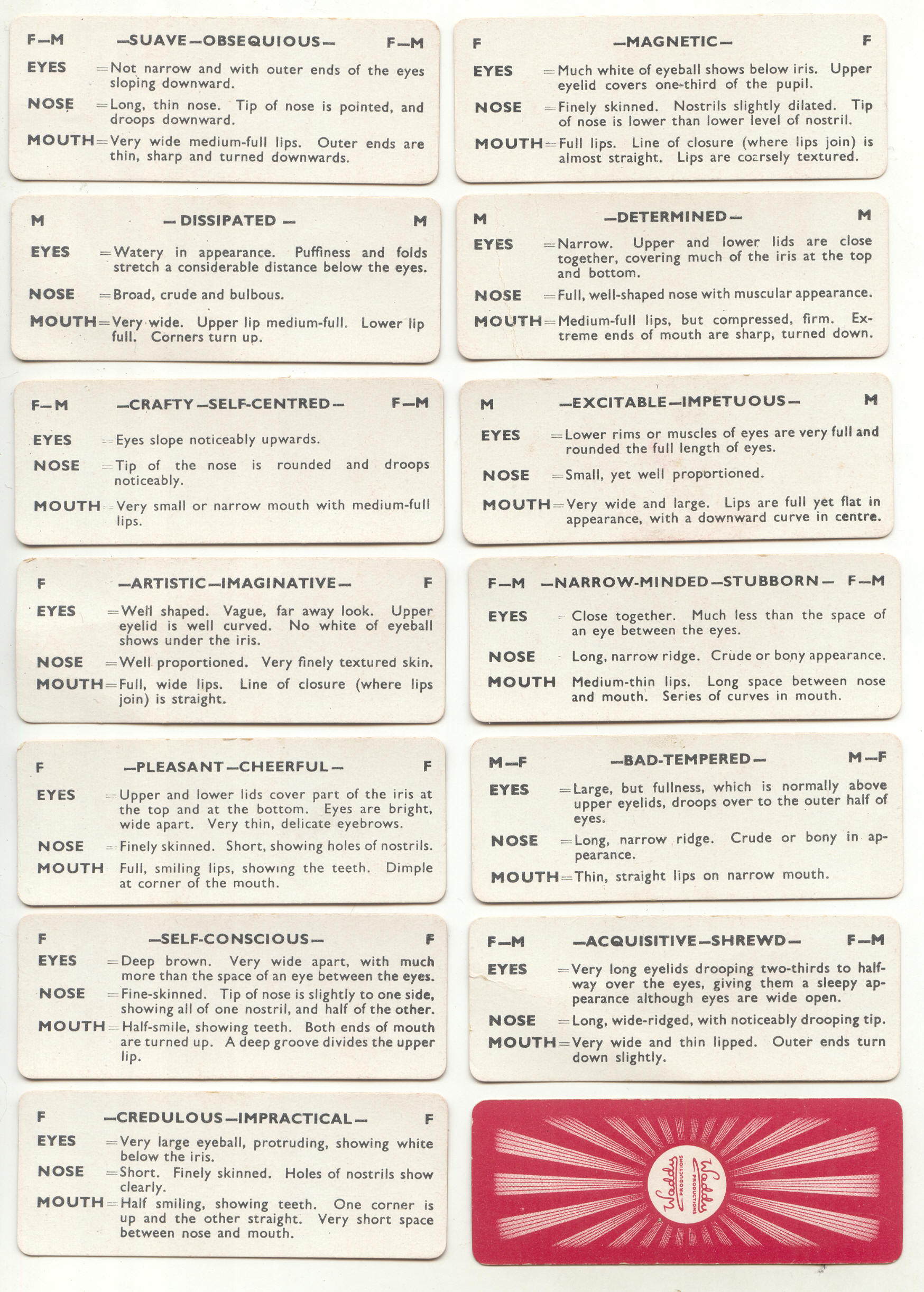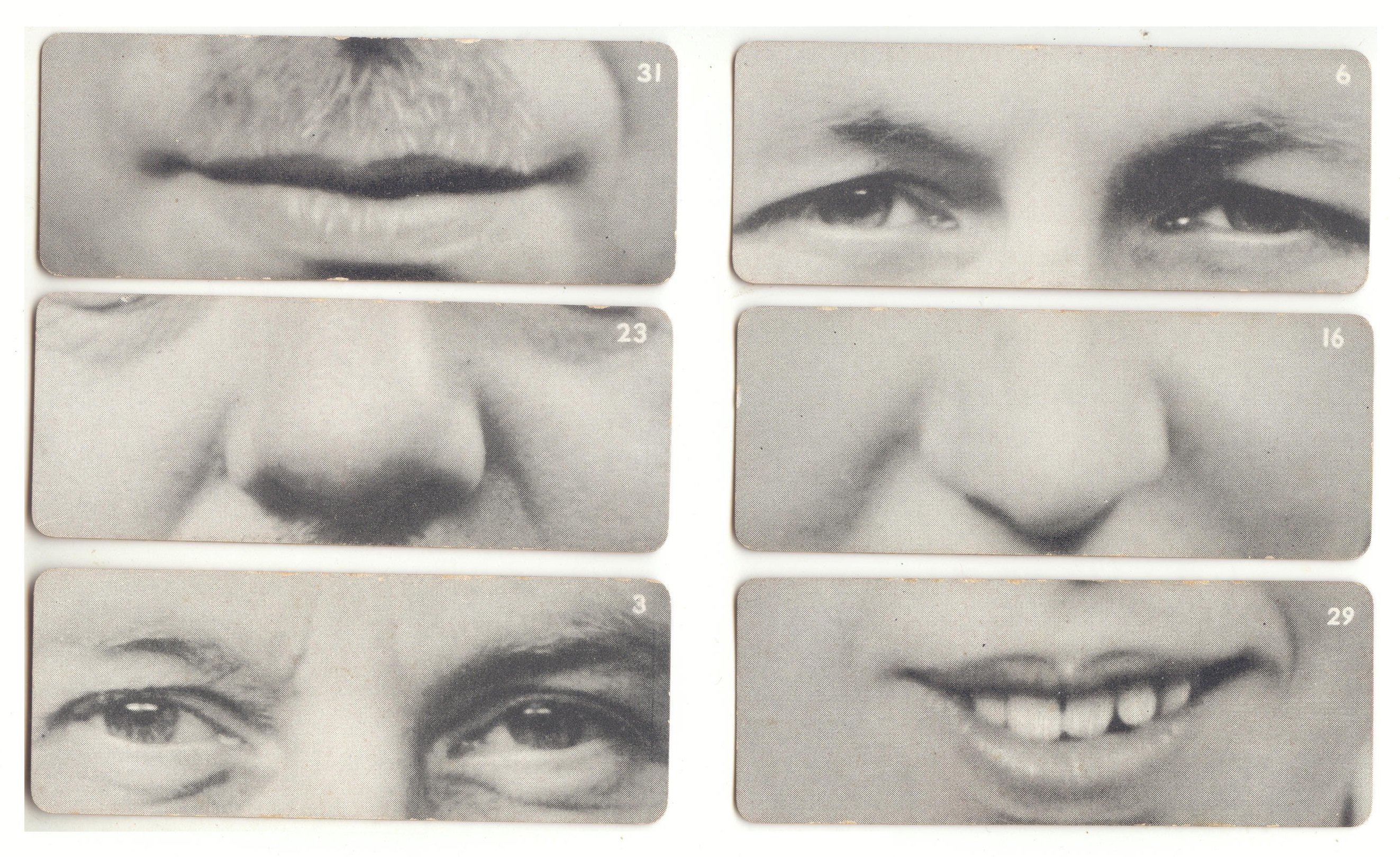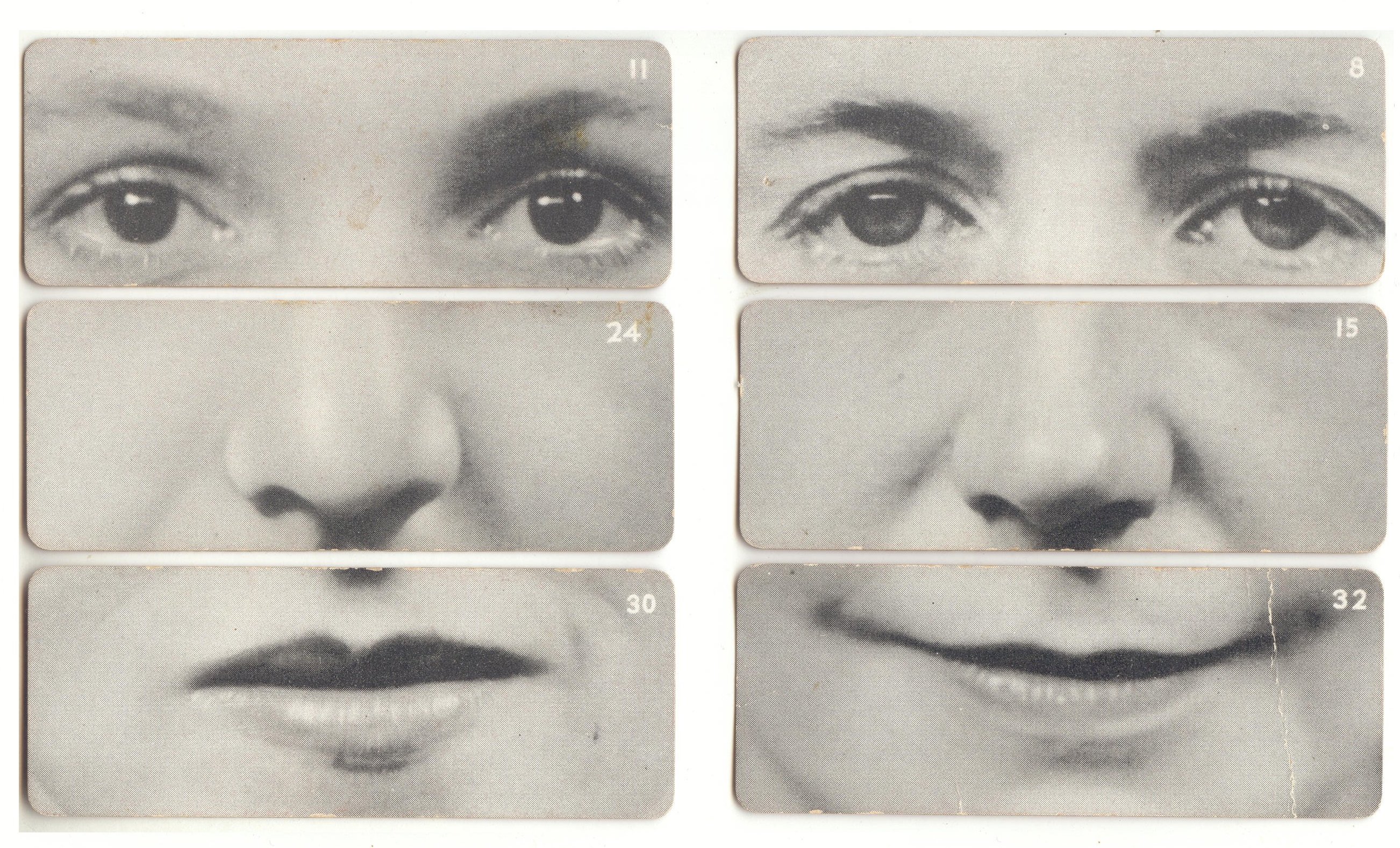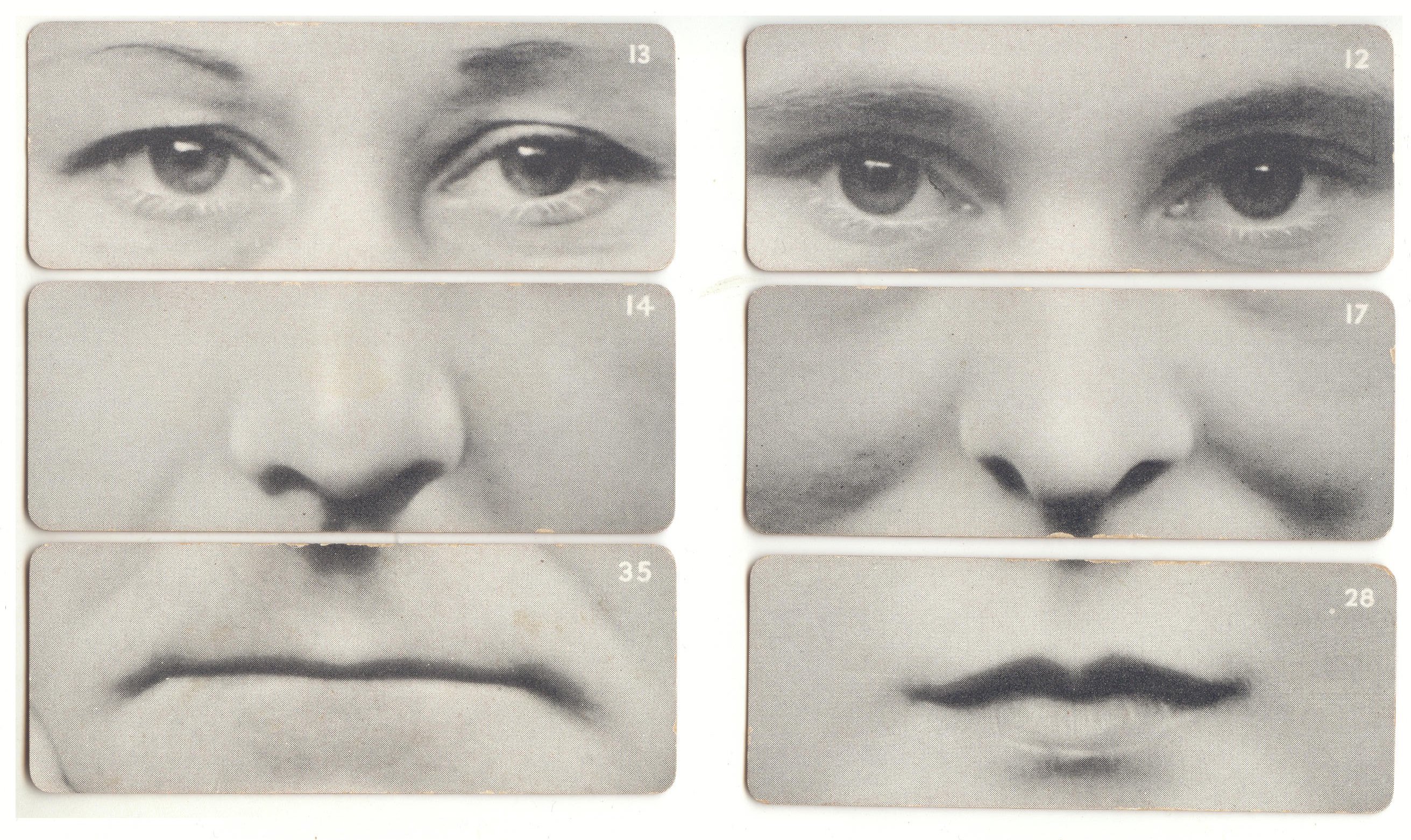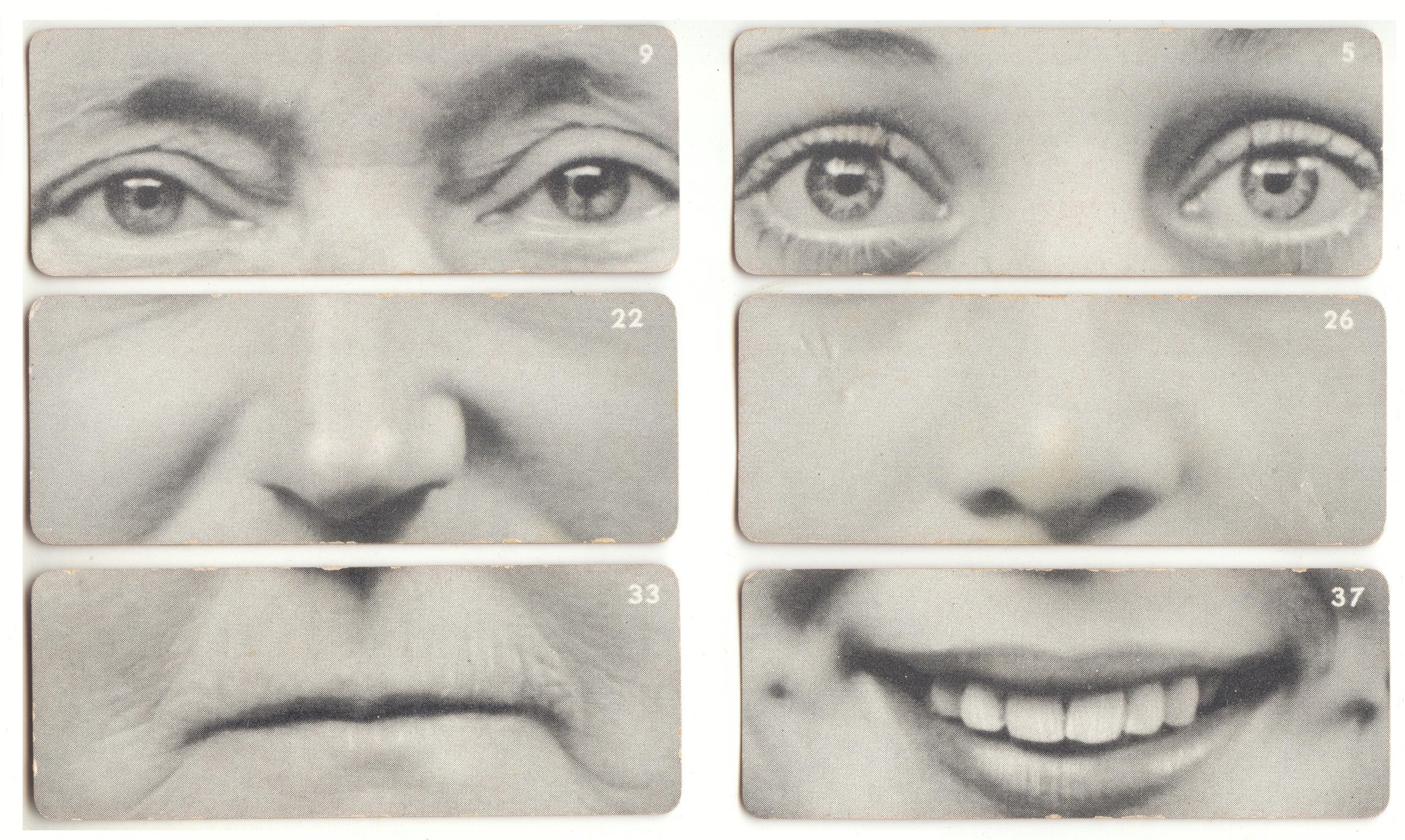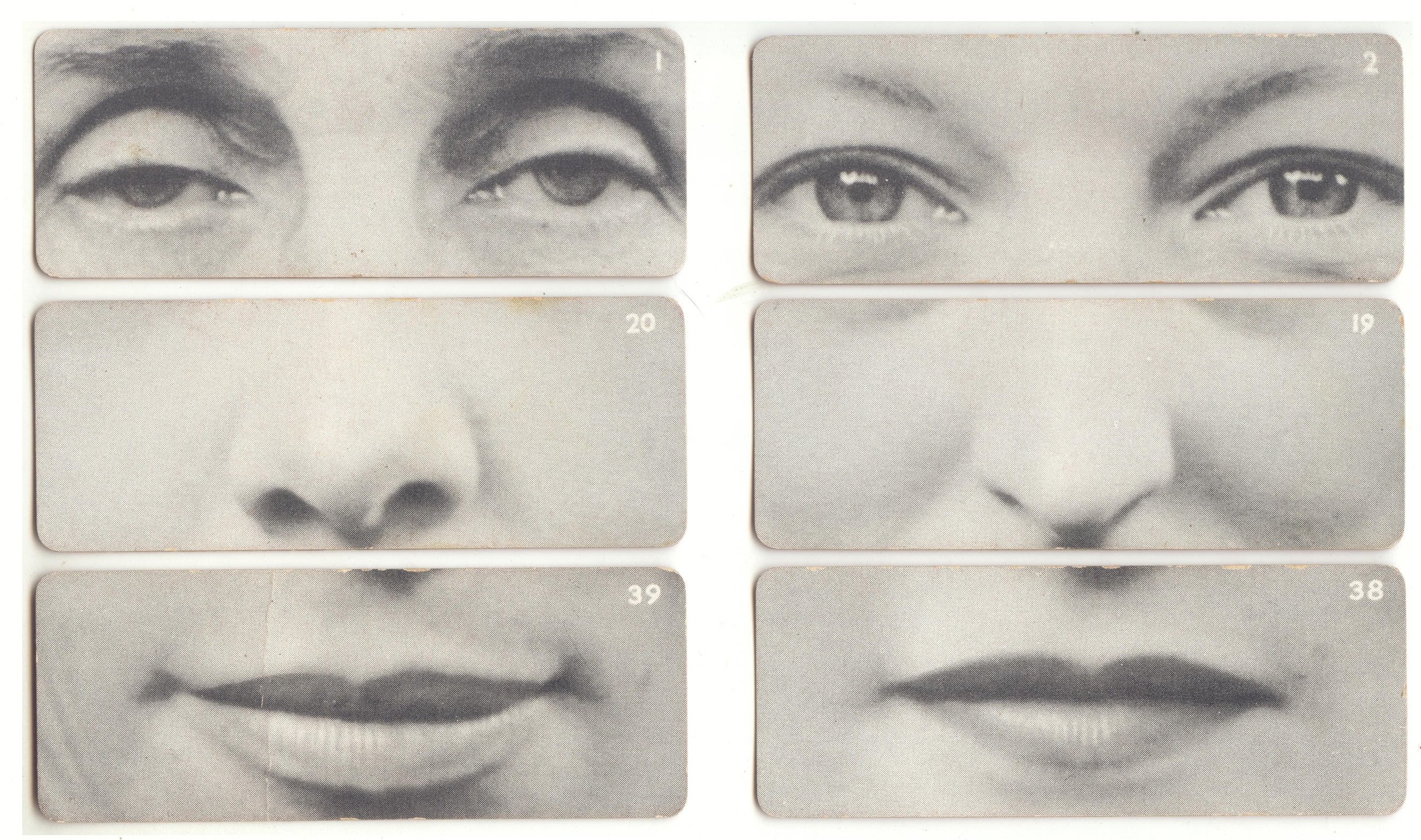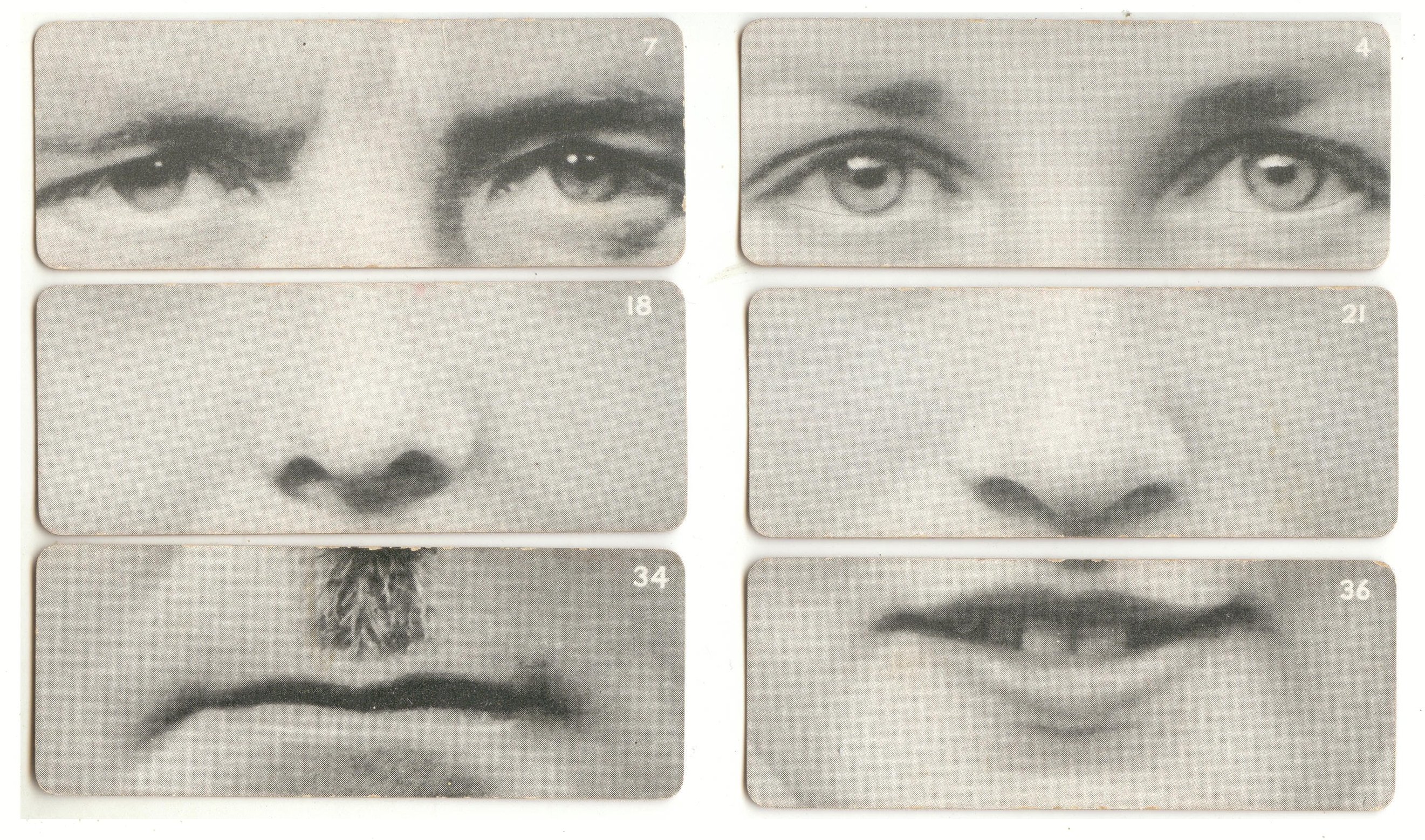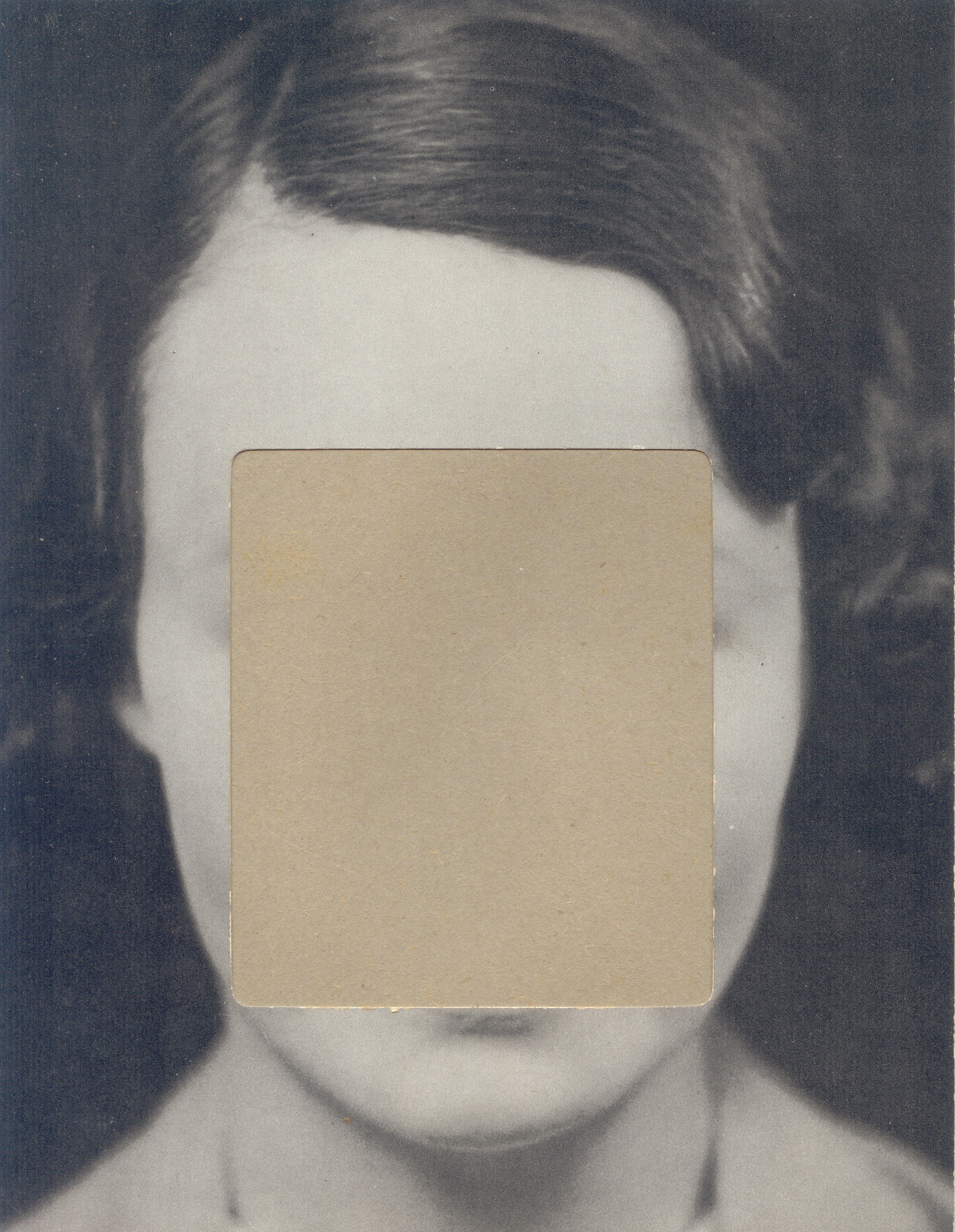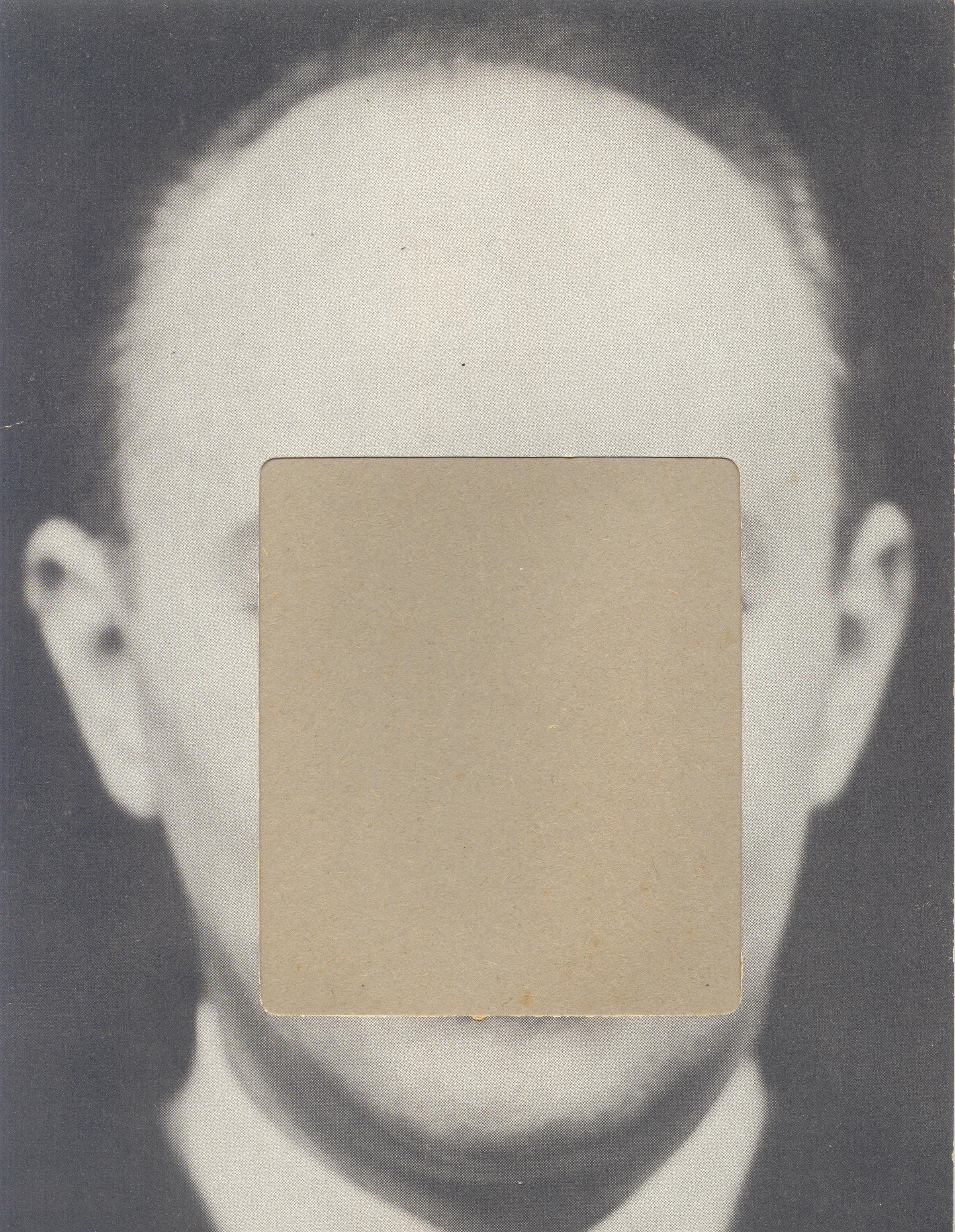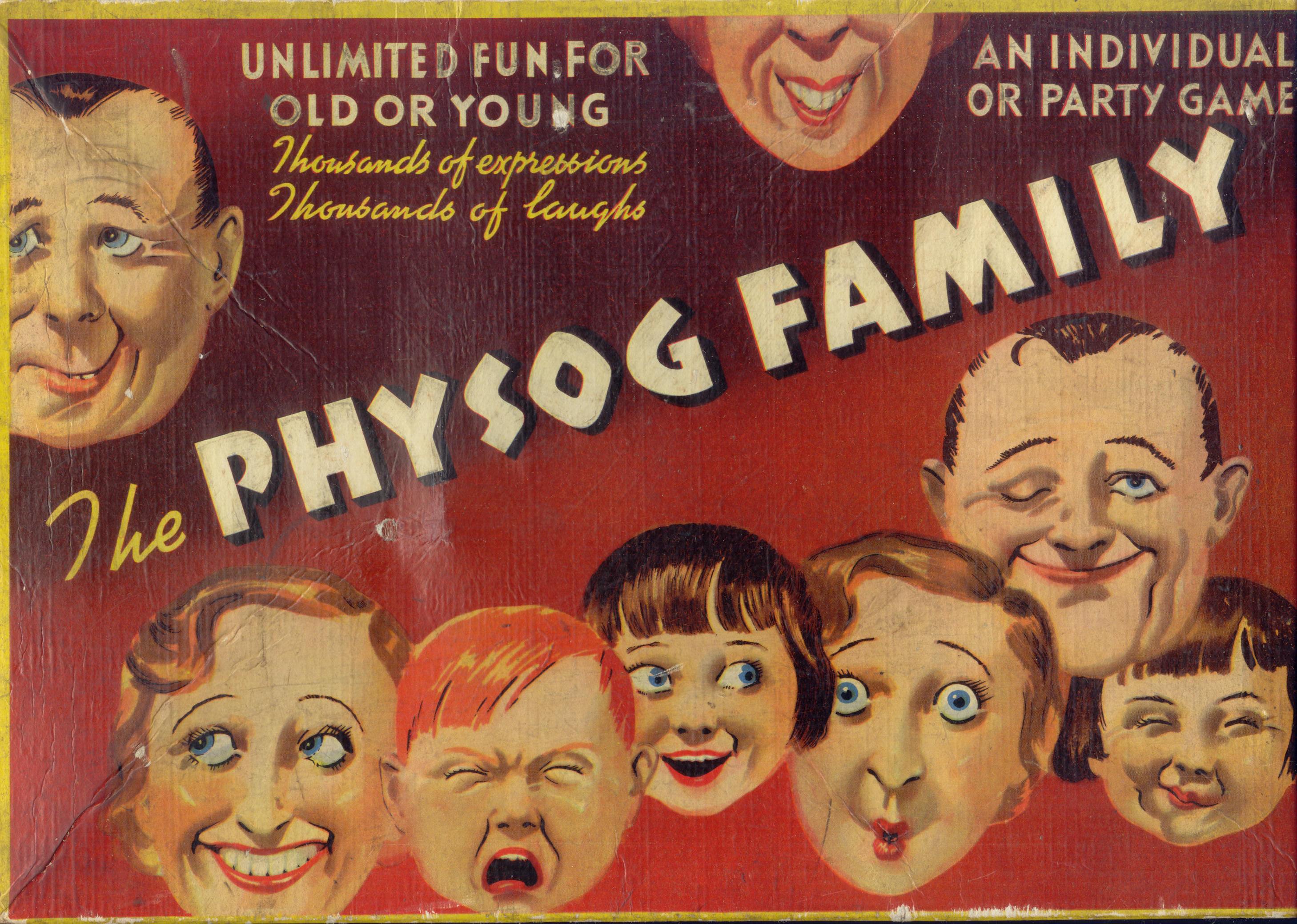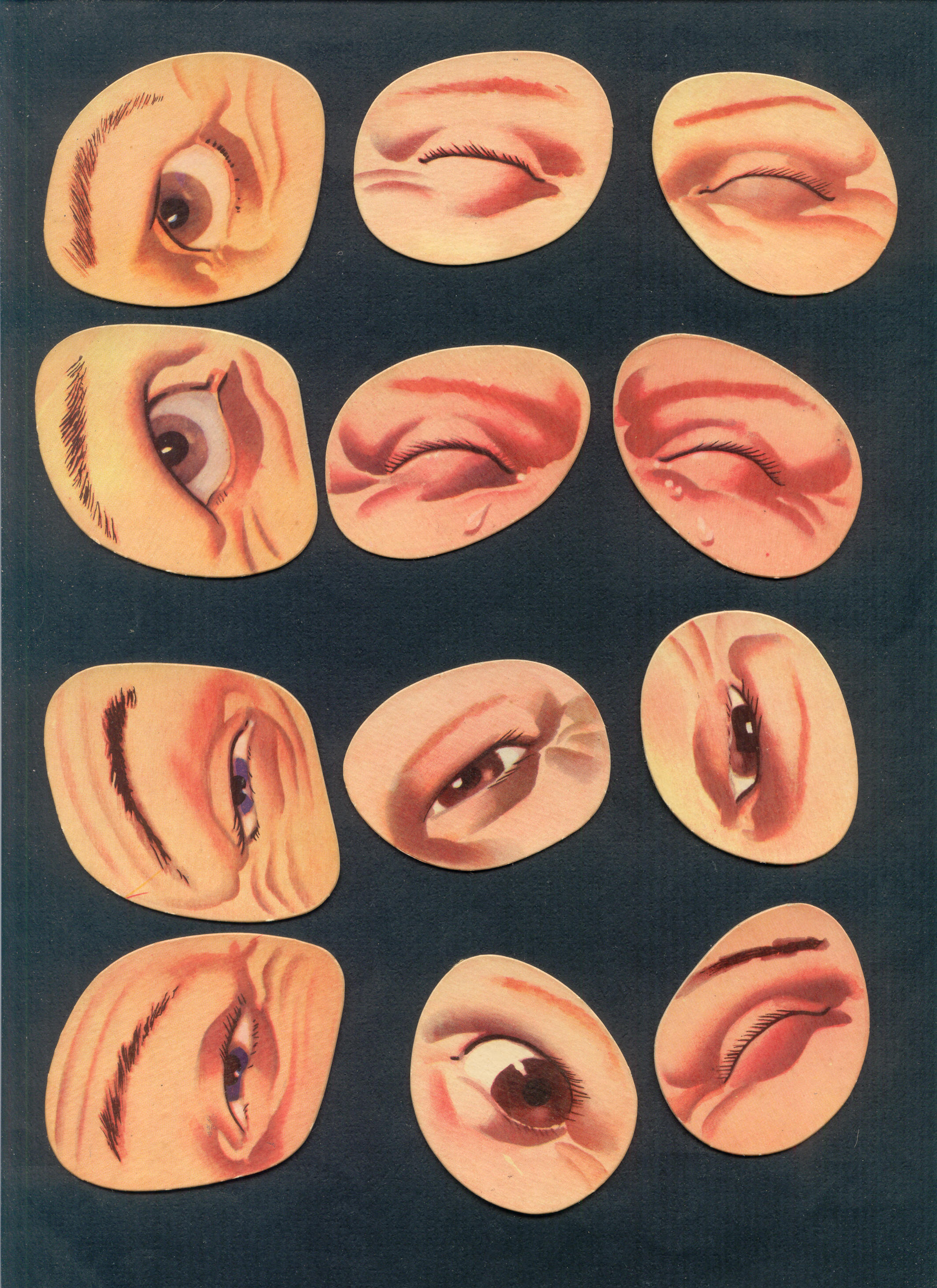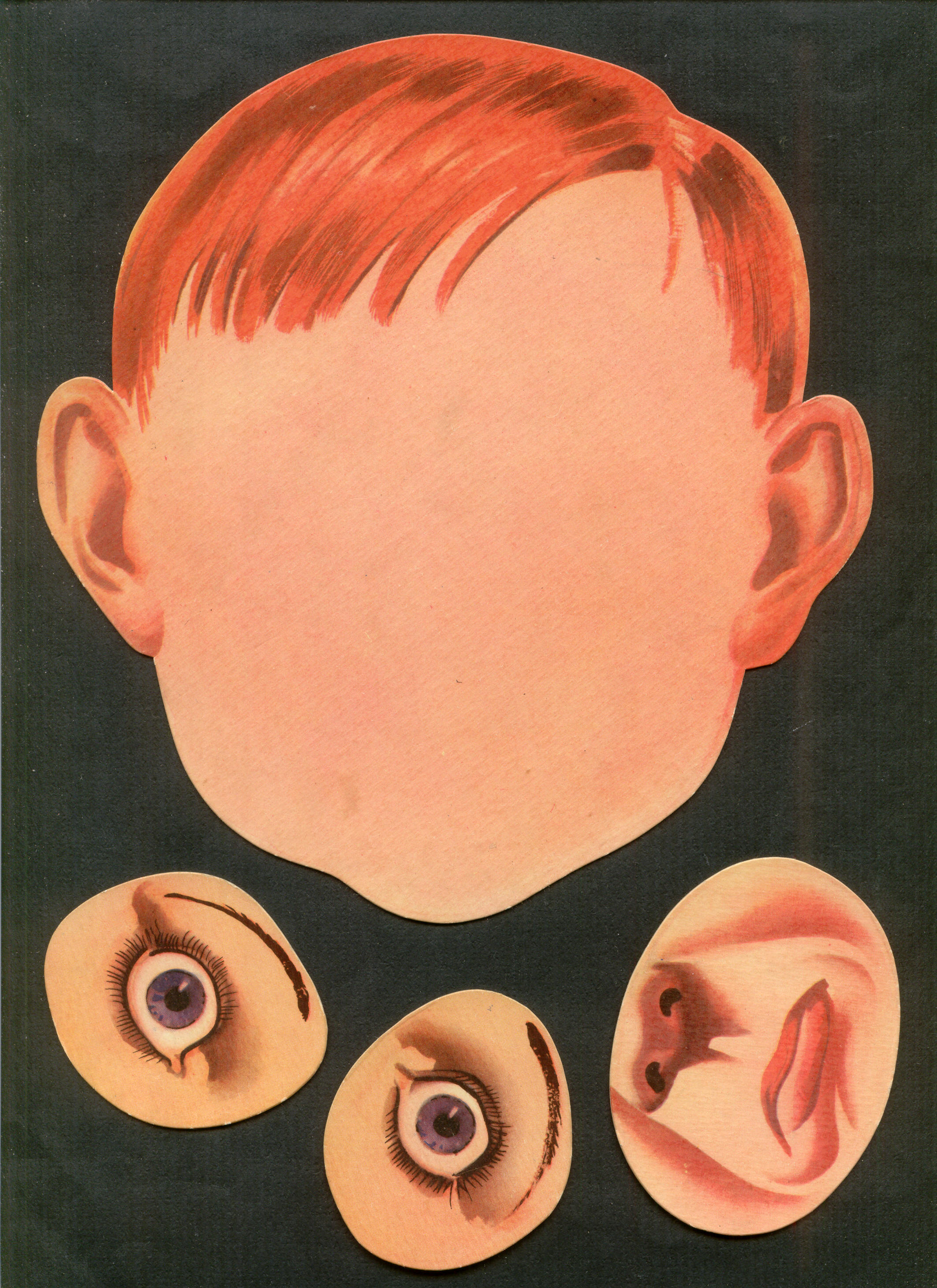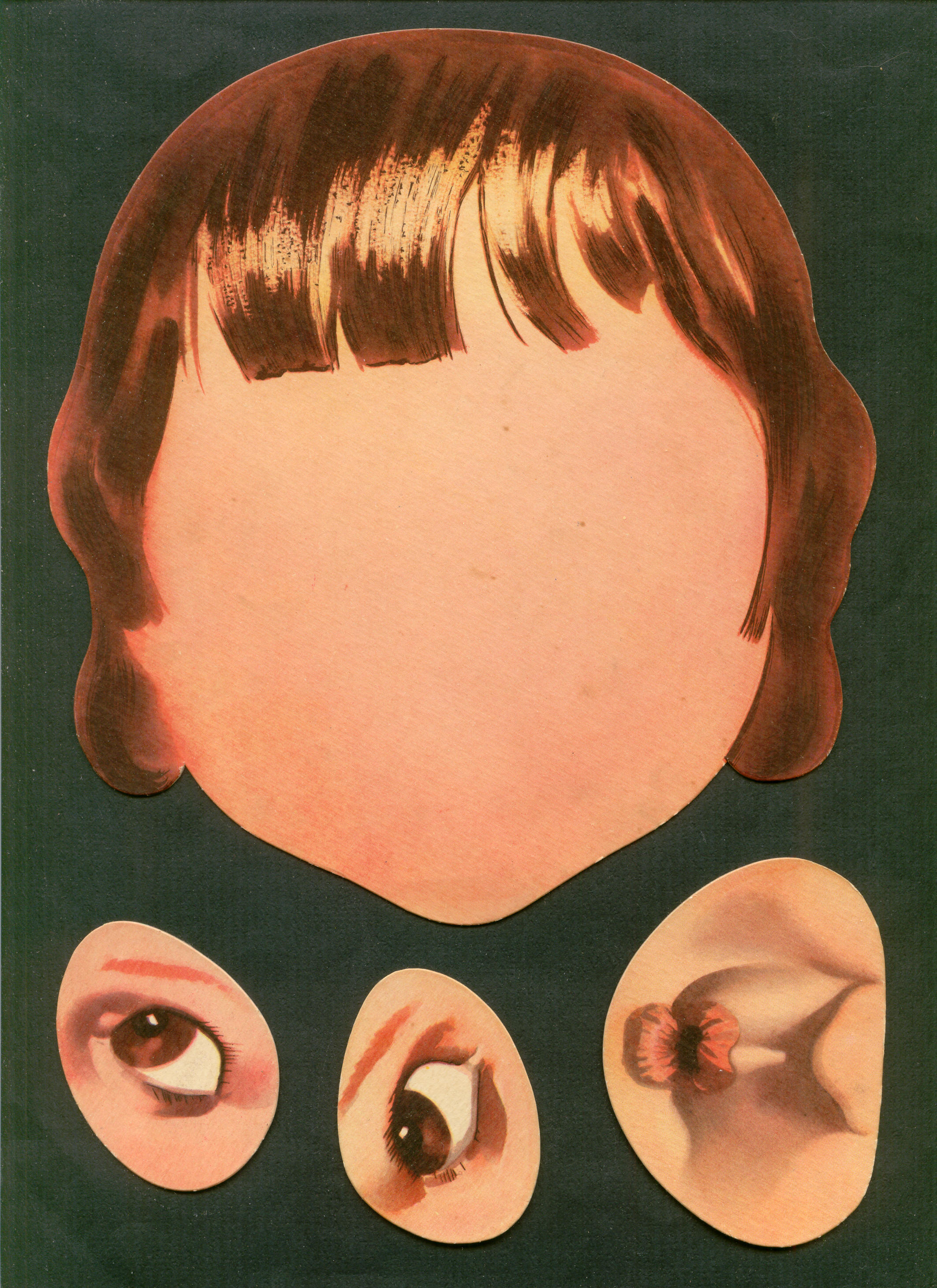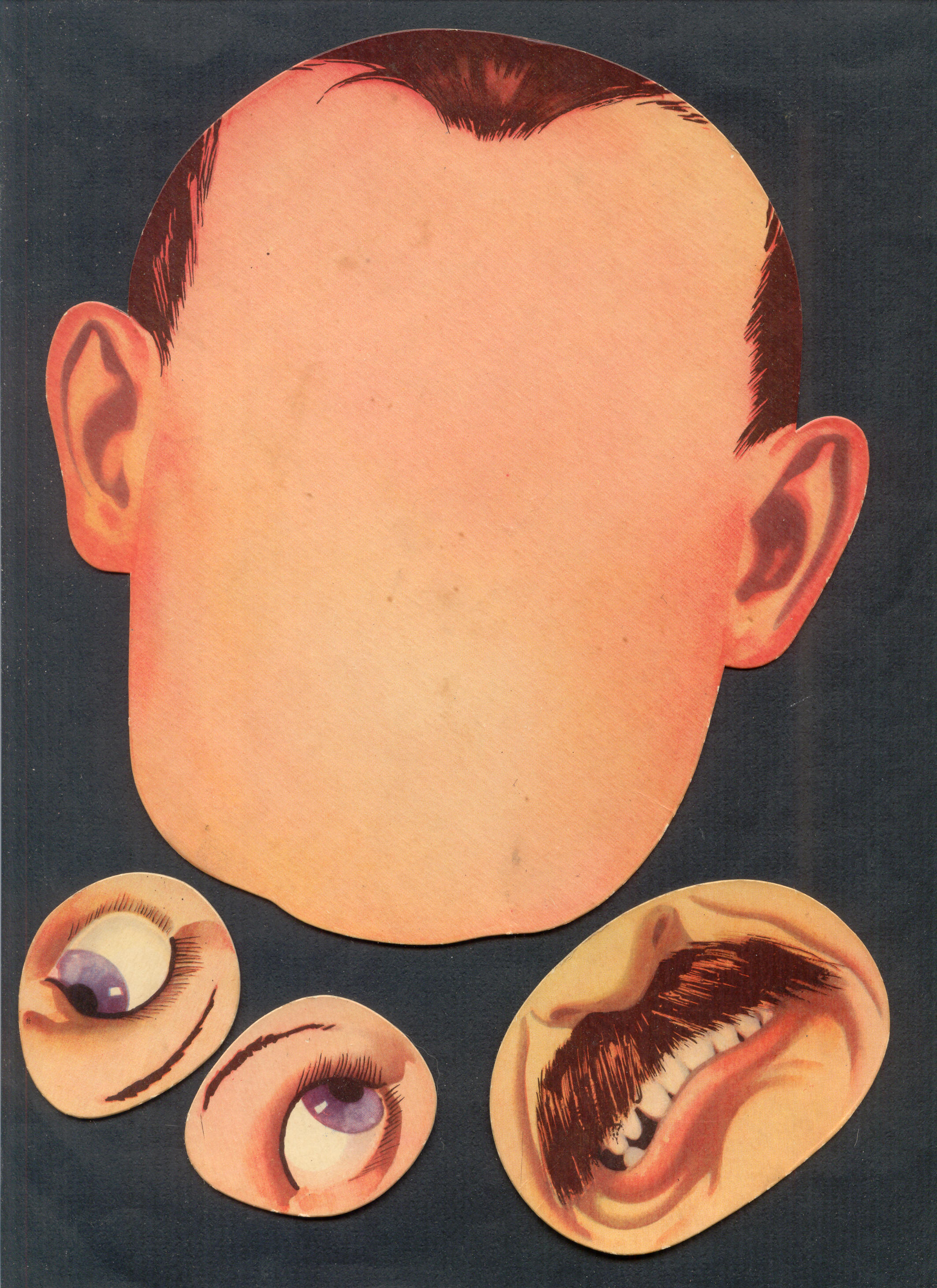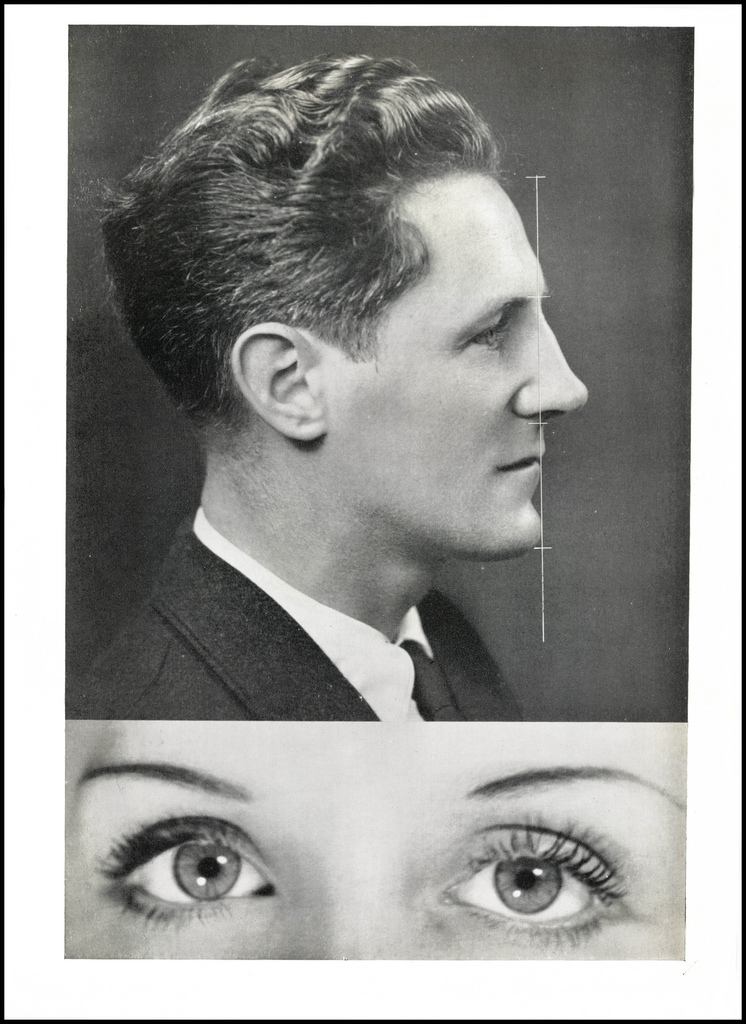Who fancies a game of Physogs? It’s great. We’ve got big photos of the cards from this 1930 game designed by psychologist Jacques Penry, so you can print them out and play. The aim of the game is to construct faces. Handy cards let’s you know what’s what. I’ve included them, too. Penry was of the mind that a person’s facial profile can indicate their personality. At the end you can see a video from 1939 of Jacques discussing his theory.
As well as making a handy test to check on your family’s criminal tendencies, Penry (nee Bill Ryan) invented the Photofit. If no sketch artist was available, the police’s witness could compile a likeness of the target using Penry’s book of facial parts.
Giles Revell & Matt Willey have more on Penry and his invention:
A photographer by trade, the Frenchman had been fascinated by facial topography as early as the 1930s, when he published his magnus opus The Face of Man. There was, Penry claimed in it, a direct link between any human’s physique and their personality: philosophers, for example, would show a marked development of the lower cheek muscles, while idiots and simpletons would invariably possess a markedly receding forehead. Following the Penry-method of facial classification, he claimed, one could cleanse society of “criminals, mental deficits, neurasthenics and vocational misfits.”
Perhaps unaware of the supremacist overtones of it’s creator’s early musings, Scotland Yard gave the Photofit kit a go in 1970. The kits come in wooden boxes, containing narrow paper strips with various facial features and an index listing the contents: eyes, noses, mouths, haircuts, chins, roughly 40 in each category. There are transparencies for add-ons, such as glasses, facial hairs or wrinkles, and a frame on which the individual parts can be assembled.
The first Photofit portrait of a British suspect was broadcast on 22nd of October 1970, in connection with the murder of James Cameron in Islington, London. Surprisingly, it came up with the goods: the image jogged a shop assistant’s memory and led to the arrest of John Earnest Bennett in Nottingham. Soon though, policemen found that Photofit portraits of suspects often looked nothing like the criminals that were eventually caught: the Penry-method clearly had its limits. In 1988, the Met introduced computer programmes for facial profiling (“E-fits”) and Photofit kits across the country were hurled onto rubbish heap.
Fun for all the family!
The Met:
Physogs, a British game from the 1940s, is a popularized version of physiognomy, the art of judging human character from facial features. Based on sociologist Jacques Penry’s How to Judge Character from the Face (1939), the game consists of fifty-six printed cards and a key book describing thirteen distinct “facial-character types”: acquisitive-shrewd, dissipated, bad-tempered, determined, suave- obsequious, artistic-imaginative, credulous-impractical, magnetic, excitable-impetuous, self-conscious, crafty-self-centered, pleasant-cheerful, and narrow-minded-stubborn.
Although the art of “reading faces” dates to ancient times, the scientific principles of physiognomy were largely discredited by the early twentieth century. Physiognomy was taken up again in the 1930s by Nazi “race scientists” whose analyses of human character were generally based on crude ethnic stereotypes. Marketed less than a decade later, Physogs reflects both the intuitive appeal and the inherent danger of judging character according to physical appearance.
Here’s Jacques and his subjects. It is all completely unrehearsed and oh-so very natural.
Via Patricia M.
Would you like to support Flashbak?
Please consider making a donation to our site. We don't want to rely on ads to bring you the best of visual culture. You can also support us by signing up to our Mailing List. And you can also follow us on Facebook, Instagram and Twitter. For great art and culture delivered to your door, visit our shop.
